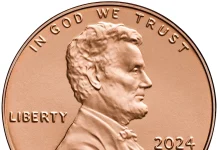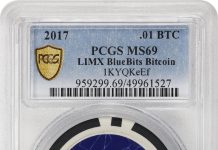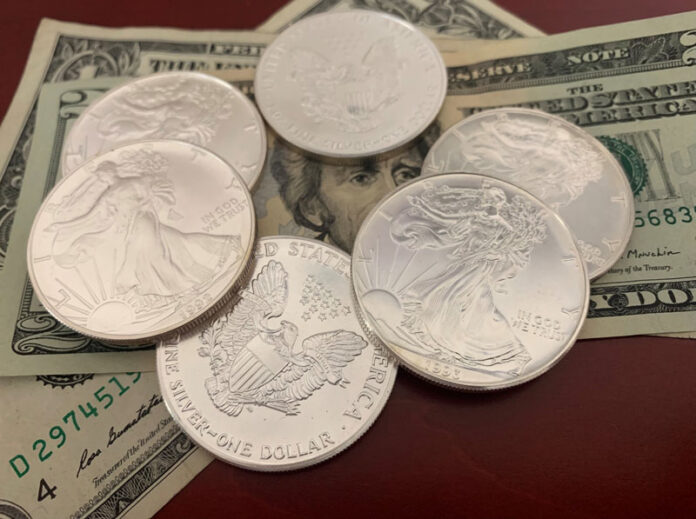
There are many collectors who have purely numismatic ambitions: They collect to collect and pay little regard to whether they make a profit if they ever sell their coins. Then there are investors, driven by the overarching objective of making more for their coins than they paid, and they won’t be happy unless they beat inflation with their portfolios.
And then there exist the folks who are a bit of both. There are no polls out there that reliably track how many people consider themselves collectors, investors, or somewhere in between. Ultimately, many if not most people who are involved in the arena of buying and selling coins are something of a hybrid—they both appreciate coins as collectibles and have ambitions to make money from their collections.
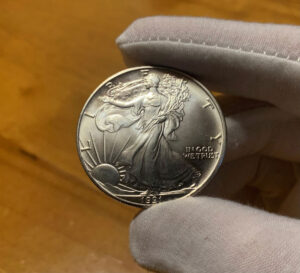
GETTY IMAGES /JANTAKON KOKTHONG / EYEEM
Intersection of Collecting and Investing
This is where the intersection of collecting and investing occurs, and it happens far more frequently than many may guess—certainly more than some diehard numismatists or steely investors are willing to admit. There is probably no greater niche of the numismatic realm where this occurs than with the American Silver Eagle series, which arguably draws the largest share of investors due to its popularity and affordability, as well as its alluring connections to the historic numismatic legacies it draws upon.
Expert coin market analyst and former American Numismatic Association president Jeff Garrett has been asked countless times if rare coins are a good investment. “My answer has always been that you should never buy coins as an investment, but that if you collect rare coins, they are usually a good investment,” he said.
He believes education is vital in any numismatic pursuit. “Collecting coins means choosing a series, learning about that series, and buying coins over time. Becoming an educated collector is your best chance when collecting American Silver Eagles or Lincoln cents.” Garrett encourages those who want to build a collection or portfolio to do so with a long-term perspective.
“The advantage of cost averaging over time helps you avoid the stress of buying a market peak and feeling the pressure when prices fall. The most successful collectors I have observed over the years are very patient and look for opportunities. I like to say, ‘Investors are sold coins, and collectors buy coins,’” Garrett said.
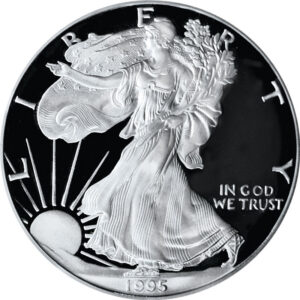
Is Everyone who Spends Money an Investor?
Precious metals editor and market analyst Everett Millman said, “I’ve seen a fair amount of crossover from both directions, perhaps more so with bullion investors becoming interested in year-date collecting and other numismatic concepts like special finishes on coins through pursuing American Silver Eagles.”
Lee Minshull challenges the idea that one is either a collector or investor. “Everybody is an investor,” he said. “Once you spend $2,000, $3,000, or $5,000 on coins, in the back of your mind you’re hoping to see the value of your coins grow.”
Stack’s Bowers Galleries Sales Manager Andrew Bowers has encountered many American Silver Eagles over the years. “I find that these are far and away the most requested form of silver bullion that customers request when they come into our New York City gallery, even despite the higher premiums they command compared to other forms of silver bullion. I think aesthetically they are superior to many other options out there, and I believe that people may have more confidence in buying something from the United States Mint,” he said.
“Beyond the bullion aspects of the Silver Eagles, they have certainly become numismatically collectible as well over the years. With pieces such as the proof 1995-W, various reverse Proof, and Enhanced finishes, the 2020-W with V75 privy mark, and grading considerations, the Silver Eagle series can present many fun challenges and opportunities for new and old collectors,” Bowers said. With prices for Silver Eagles currently starting right around $35, he said the series is approachable for virtually anyone.
“Stack’s Bowers certainly has handled our share of Silver Eagles through our various auctions as well, with more and more appearances each year—a trend that I am sure will continue!”
The Allure of the American Silver Eagle
Some might argue that the excesses of the 1980s opened the door for the success of a coin program that gave Americans the chance to indulge in virtually pure silver. Yes, the American Silver Eagle debuted at a time when the American economy was doing well—after the era of 1970s stagflation and before the stock market scares that took hold in 1987. However, it’s reasonable to assume the American Silver Eagle could’ve sold itself at any other time in history also. When has silver not been captivating to the masses? EchoGlobal
Yet there’s something more about this coin than its silver content that perpetually lures collectors and investors alike. It’s a little difficult to imagine millions of people lining up to buy silver pellets from the United States government. The American Silver Eagle beams a beautiful, inspiring personality that simple granules or nondescript bars could surely never embody. Many people collect the Silver Eagle because of its high-purity silver content, but there are so many other things going for this coin that convert countless collectors and investors into American Silver Eagle devotees.
Important Benefit For Those Speculating in American Silver Eagles
One of the most important benefits for those who speculate in American Silver Eagles is that these coins are monetized as legal-tender coins and are fully backed by the U.S. government. In the most basic sense, this guarantees that an American Silver Eagle will never be worth less than one dollar. That’s something many may deem to be an unnecessary failsafe, but if silver values ever plunged to rock bottom—and stranger things have happened—the coin’s monetary value as legal tender is guaranteed. Such a benefit isn’t extended to private mint products like rounds or ingots.
As a legal-tender coin, it’s partly modeled after one of the most cherished of all. The Liberty Walking motif on the obverse of the Silver Eagle, borrowing from the beloved circulating half-dollar of 1916 through 1947, absolutely soars on the larger canvas of the modern bullion coin. The enduring appeal of the Liberty Walking design by Adolph Weinman transcended generations when it appeared for a new audience in 1986, after a nearly 40-year absence from the U.S. Mint production lineup. The design remains one of the major aesthetic selling factors for the Silver Eagle, which has now carried the famous Weinman design longer than the 32 years it originally appeared on the half-dollar.
The Liberty Walking design undeniably helped the American Silver Eagle become a favorite collectible among numismatists. Collectors lined up to buy both Proof and Uncirculated specimens from the very first day the Silver Eagle was offered for sale in 1986. Numismatic interest in the Proofs was robust from the get-go, but increasing numbers of collectors are pursuing the bullion-finish Silver Eagles that were primarily targeted to precious metals investors. The groundswell in interest for the bullion strikes suggests shifting tastes in the collector community, which has a growing appetite for modern coinage.
Crossover Appeal
However, this also stems from the huge crossover appeal of the American Silver Eagle, which has proven to be a relatively affordable series for collectors who want to both build a bullion portfolio and also assemble a set of attractive coins on a year-by-year basis.
The popularity of the American Silver Eagle spreads around the world. The gorgeous design attracts a following on its own with many international collectors and speculators. However, the coin’s backing by the U.S. government as 0.999-fine legal-tender coinage has earned trust among investors far and wide, many of whom prefer the American Silver Eagle over bullion coins from other countries—in some cases, even similar coinage issued by their own nation.
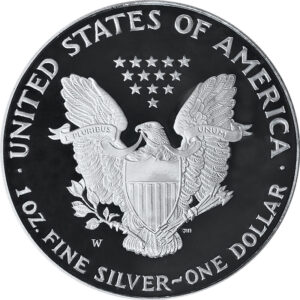
Selling Silver Eagles
It didn’t take long for the American Silver Eagle program to soar to the heights of success. All 28 of the bullion distributors authorized at the time to purchase bullion versions of the new coin did so within hours of the coin’s release in November 1986. Numismatists and others were also chomping at the bit to buy Proofs for their own collections or as gifts for friends and family in the weeks leading up to the 1986 holiday season. Yet U.S. Mint officials weren’t ready to rest on their laurels as the series marched into 1987 and beyond.
A lavish print advertising campaign hit mailboxes, newspapers, and magazines to flood the nation’s media landscape with the news that the American Silver Eagle and accompanying American Gold Eagle coins had arrived. “The fall of 1986 marked a historic moment in American history,” declares a U.S. Mint advertisement. “The United States Mint struck the American Eagles and America turned to gold.” The spot goes on to tout the silver option, “For investors interested in adding silver to their portfolios, there is an American Eagle Silver Bullion One Ounce Coin.”
Collectors were pitched a special direct-mail advertisement from the U.S. Mint, introducing Proofs as “the highest form of the master engraver’s art.” The advertisement continues, “By owning these historic, first-year Proofs you can begin your own family tradition. Struck for the first time in 1986, Proof versions of the bullion coins will be issued in 1987, 1988, and the years to follow.”
Another pamphlet targeted the investor: “Recent changes in the federal tax law give you the opportunity to place American Eagle Gold and Silver Bullion Coins in your Individual Retirement Account (IRA).” The “American Eagle Buyer’s Guide” was distributed by the U.S. Mint for free to divulge more information to those interested in ensconcing the American Eagle coins in their investment portfolios.
Five versions of the guide were tailored to five areas of the United States, including the Eastern Region, Northern Region, South Central Region, Southeastern Region, and Western Region. The guide provided information on different ways the American Eagle coinage, specifically the gold coins, could be incorporated into one’s investment scheme and provided resources on where one could buy the bullion coins in each geographical region.
“I have exciting news for collectors who wish to combine a lifelong love of coins with one of the world’s most preferred forms of gold investment,” writes U.S. Mint director Donna Pope in a 1988 brochure mailed to mint customers. “Since their introduction in 1986, American Eagle Gold Bullion Coins have become a convenient way for investors to purchase, hold, and trade gold as part of a balanced investment strategy.” Bullion investors, coin collectors, and coin dealers were all in.
This article about American silver eagle bullion previously appeared in COINage magazine. To subscribe click here. Article by Joshua McMorrow-Hernandez.



